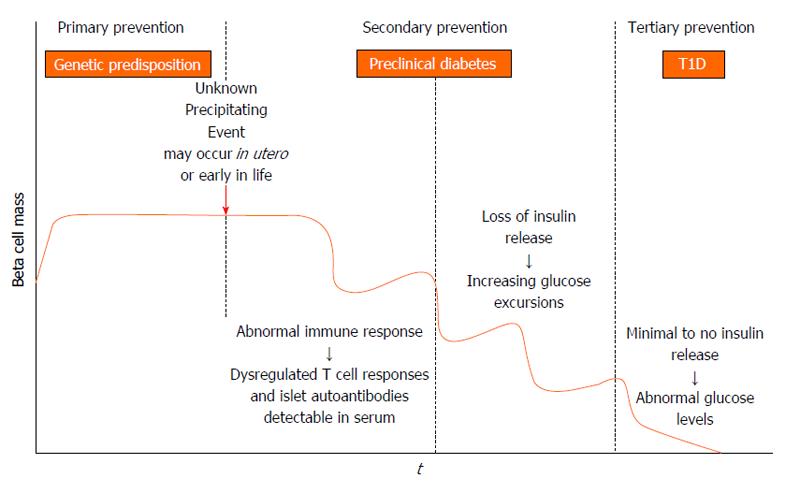Copyright
©The Author(s) 2015.
World J Diabetes. Apr 15, 2015; 6(3): 380-390
Published online Apr 15, 2015. doi: 10.4239/wjd.v6.i3.380
Published online Apr 15, 2015. doi: 10.4239/wjd.v6.i3.380
Figure 1 Stages in the development of type 1 diabetes adapted from the initial model proposed by George Eisenbarth.
In genetically at risk individuals an unknown trigger, presumably environmental, initiates an autoimmune response that results in loss of beta cell mass. Before metabolic disturbances occur, islet autoantibodies (insulin, glutamic decarboxylase, islet antigen 2, zinc transporter 8) are measureable in serum. As beta cell mass decreases, potentially in a relapsing-remitting manner, there is loss of endogenous insulin release and ensuing hyperglycemia. Within this model, there are opportunities for type 1 diabetes (T1D) prevention in genotypically high risk individuals (primary prevention) and in autoantibody positive individuals (secondary prevention). Interventions to preserve remaining beta cell mass at diagnosis are also possible (tertiary prevention).
- Citation: Simmons KM, Michels AW. Type 1 diabetes: A predictable disease. World J Diabetes 2015; 6(3): 380-390
- URL: https://www.wjgnet.com/1948-9358/full/v6/i3/380.htm
- DOI: https://dx.doi.org/10.4239/wjd.v6.i3.380









